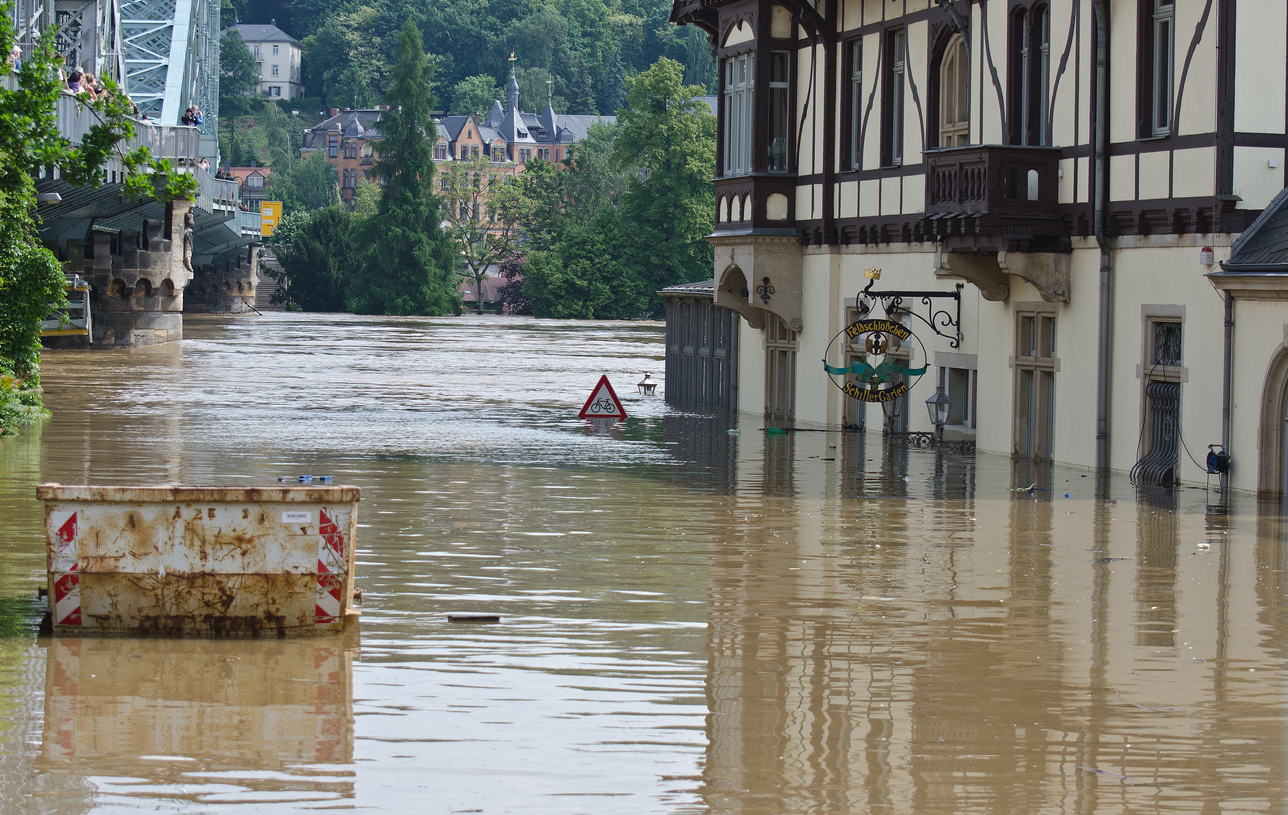Less devastating than mega events such as earthquakes and hurricanes, these secondary perils, as they are known in the industry, happen relatively frequently and include hail, drought, wildfire, snow, flash floods and landslides.
Climate change and urban sprawl are driving a jump in secondary perils losses, said Tamara Soyka, Head Cat Perils EMEA at Swiss Re. Insurers and reinsurers, who traditionally focused on predicting big weather events that can cause widespread damage, are increasingly incorporating secondary-peril models.
Swiss Re, for instance, last year started considering pluvial—that is, heavy rainfall, similar to the recent European floods—flood zones when assessing risks.
A storm system over Europe dumped heavy rains in recent weeks, causing heavy floods in Germany, Belgium and parts of the Netherlands and Switzerland. The German Insurance Association on Wednesday said it expects insured losses could hit nearly $6 billion as a result of the flooding in North Rhine-Westphalia and Rhineland-Palatinate. It doesn’t yet have estimates for the damage in Saxony and Bavaria.
This year is expected to be the most damaging for the country since 2002, when insured storm damage totaled about €11 billion, equivalent to $12.98 billion, the association said. While mostly all residential buildings have windstorm and hail coverage, only 46% of homeowners have cover for heavy rain and floods.
Heavy rain, hailstorms and wind in Germany and Switzerland in June have already cost the industry an estimated $4.5 billion, according to analysts at Berenberg.
Analysts at Moody’s Investors Service in a note this week said German insurers “may find it challenging to protect homeowners against climate risk without significant price increases.”
Insurers paid out $81 billion for damages related to natural catastrophes in 2020, according to reinsurance giant Swiss Re, up 50% from 2019 and comfortably topping the $74 billion 10-year average for such losses.
Secondary peril events accounted for more than 70% of the $81 billion in natural catastrophe losses last year, according to the data.
Firms expected to take hits to their earnings from the European floods include Swiss Re, Munich Re AG and Zurich Insurance Group, according to analysts. Spokespeople for Swiss Re, Zurich and Munich Re declined to give estimates of the potential impact.
UBS Group AG analysts project $6 billion worth of losses for the industry, split into $2 billion for primary insurers and $4 billion for reinsurers.
The prospect of more intense weather has insurers rapidly updating their risk-assessment models and recalculating the price of insurance. Property insurers faced an estimated $18 billion bill for damage to homes and businesses from the long stretch of frigid weather in Texas and numerous other states, the equivalent of a major hurricane, The Wall Street Journal reported earlier this year.
In some cases, the increased frequency of extreme weather events can lead insurers to drop coverage altogether. Some insurers in California chose to not renew insurance policies for homeowners in high-risk areas for wildfires, the Journal reported in 2019. California wildfires the prior two years had killed dozens of people and racked up more than $24 billion in insured losses.
Analysts say the losses from the European flooding will be manageable for the industry. While they may dent quarterly or yearly earnings, they won’t have a seismic effect on their capital. If the coming U.S. hurricane season is a normal one, that will likely crimp earnings further for some.
The Euro Stoxx Insurance index is up 7.6% this year, trailing the broad Euro Stoxx 600 stock-market index, which is up nearly 15%. The insurance index has fallen 6.4% since March 30, which Berenberg analysts attribute to fears of potential dividend cuts due to recent natural catastrophes.
The costs of reinsurance in Asia and the U.S. went up over the past couple of years owing to hurricanes and wildfires, said Berenberg analyst Michael Huttner. But prices in Europe didn’t increase significantly over that period. The floods will likely help catastrophe pricing increase, said Mr. Huttner.
Will Hardcastle, an analyst at UBS, says this year is shaping up to be the fifth consecutive year that natural catastrophe losses will be above reinsurers’ budgeted level.
“The last five years would suggest you’re not getting appropriate pricing for it,” he said. “It’s always difficult to determine whether the trend is short term. Now at this point you have to be thinking it’s more structural” because of climate change, he said.













